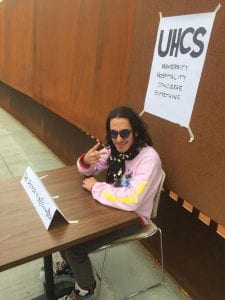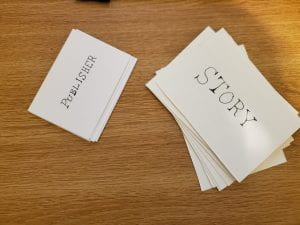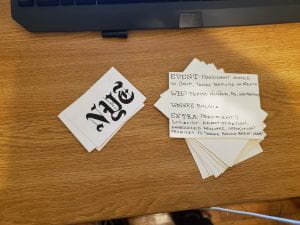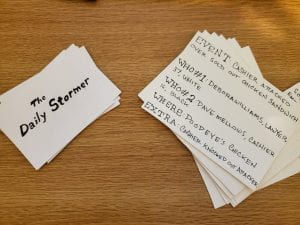My appropriation project was a trivia game in which the neither the host nor the audience where allowed to talk and the only way it was permitted to answer questions was using audio clips from the internet. The host would ask a question through a text-to-speech program (Google Translate) and the guests set off searching through the internet to find an audio clip stating the answer– however, they’re not supposed to find an audio clip of the answer itself but of someone saying the answer (e.g: “Who’s the owner of Tesla?” responded by a Rick and Morty clip saying “Elon Musk.”) Additionally, the guests are allowed to stitch together multiple audio clips to answer their question. When a guest is ready to answer they raise their hand, at which point the host selects them and nods or shakes their head to verify the answer.
The initial iteration of the game was simply having to answer with audio clips, but after a couple of rounds I decided to revise it to focus more on the audio since the conversation kept overriding it. As such, the mute part was introduced. The result was a surreal experience where multiple audio clips would overlap each other for about a minute until someone would raise their hand, the room would fall dead quiet, an audio clip would play, and then it would all happen again. It especially became strange when players would stitch together answers or when they’d answer wrong and the cacophony began again– the game felt like it had a strange rhythm. The resulting soundscape felt like something that would not be unusual presented next to Hugo Ball’s Karawane, if only a bit more coherent.






